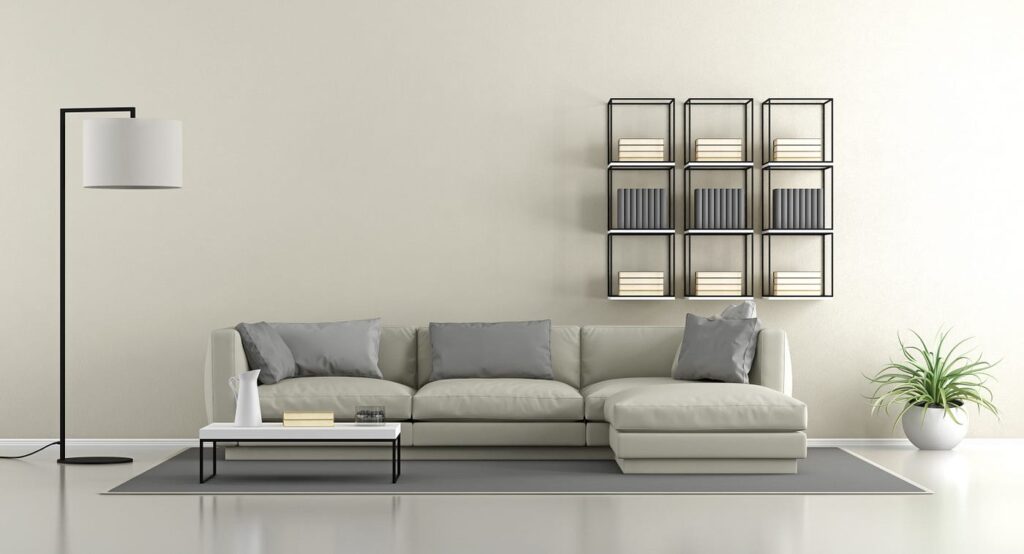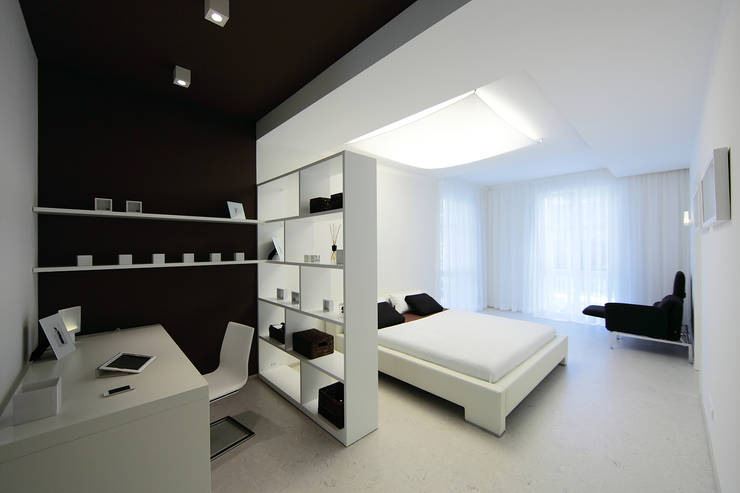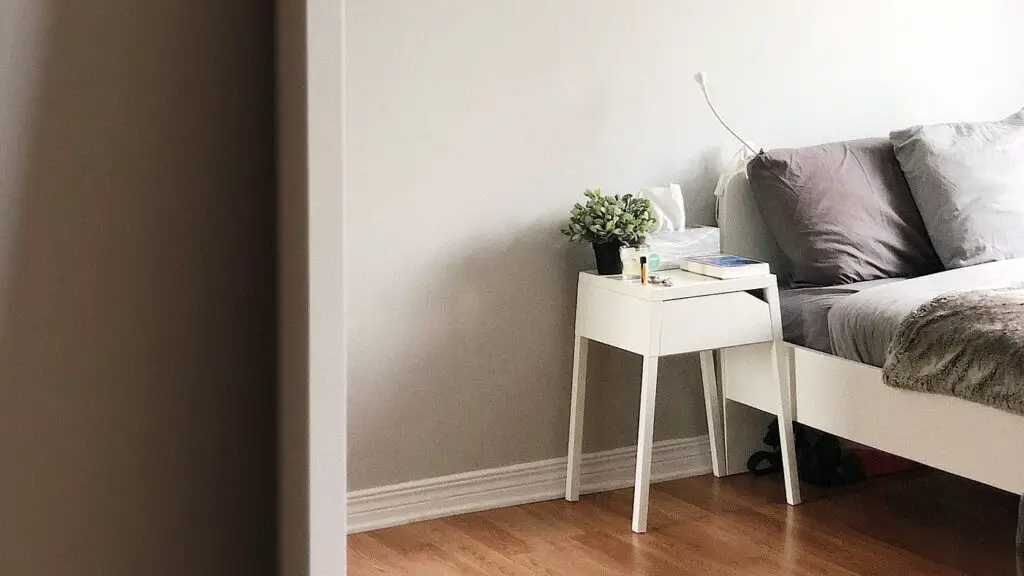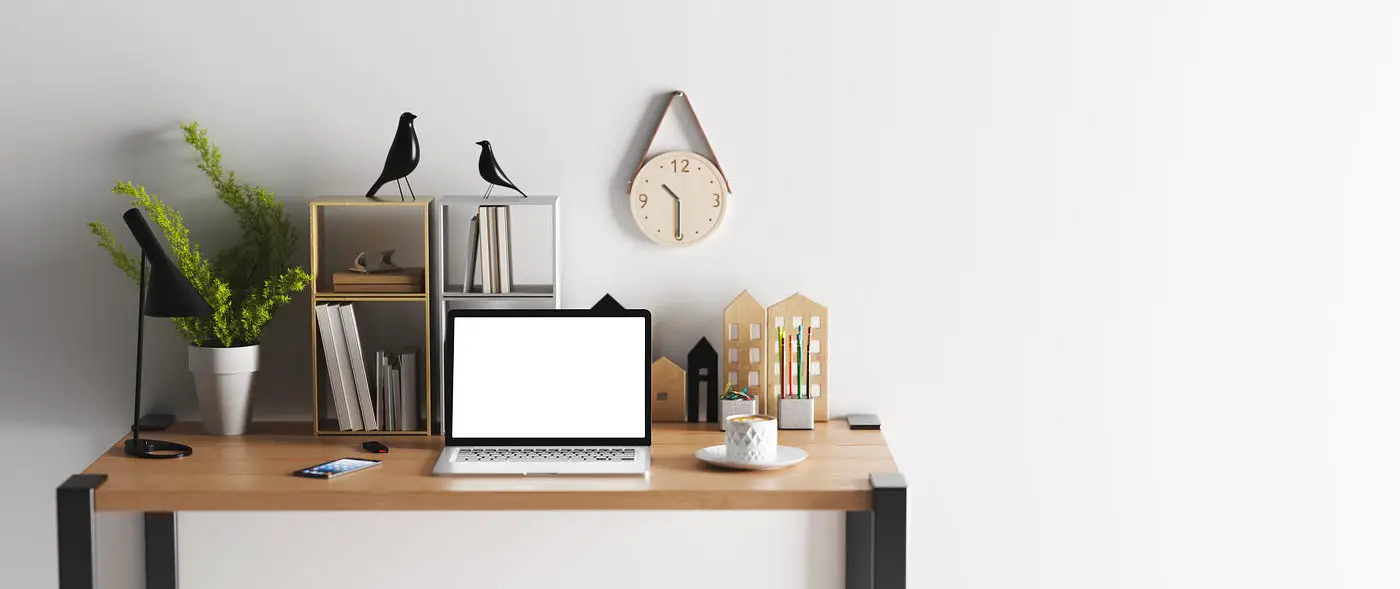You’ve probably heard the buzzword “minimalism” floating around lately and wondered what it’s all about. Well, it’s time to find out! “Embracing Minimalism: The Art of Living with Less” explores the beauty and simplicity of adopting a minimalist lifestyle. In this article, you’ll discover how minimalism not only declutters your physical space but also brings clarity and contentment to your mind. Get ready to unlock the secrets of living with less and find out how it can transform your life for the better.

The Concept of Minimalism
Definition of minimalism
Minimalism is a lifestyle philosophy that encourages individuals to live with intention and purpose, stripping away unnecessary possessions, distractions, and obligations. At its core, minimalism is about embracing simplicity and focusing on what truly brings joy and fulfillment. By eliminating clutter and excess from all aspects of life, minimalism allows you to prioritize what matters most to you.
Historical origins of minimalism
The origins of minimalism can be traced back to various cultural and artistic movements throughout history. In the realm of visual arts, minimalism emerged in the 1960s as a reaction against the complexity and flamboyance of abstract expressionism. Artists such as Donald Judd, Dan Flavin, and Agnes Martin sought to reduce art to its essential elements, using clean lines, geometric shapes, and solid colors. This artistic movement heavily influenced the minimalist lifestyle we know today.
Core principles of minimalism
Minimalism is guided by several core principles that lay the foundation for a minimalist lifestyle. These principles include intentional living, focusing on experiences rather than material possessions, decluttering physical and mental spaces, and embracing a mindset of contentment and gratitude. By adhering to these principles, individuals can create a balanced and fulfilling life centered around what truly matters to them.
Benefits of Minimalism
Reduced stress and anxiety
Living a clutter-free life can significantly reduce feelings of stress and anxiety. When your physical and mental spaces are decluttered, it becomes easier to find peace and remain focused. The absence of excess belongings allows you to breathe more freely and fosters a sense of calm. Minimalism encourages simplicity, which in turn alleviates the burden of clutter and helps you experience greater tranquility in your everyday life.
Increased focus and clarity
By eliminating unnecessary distractions, minimalism promotes increased focus and clarity. When you remove the excess noise and physical clutter, you create space for greater mental clarity and enhanced productivity. With fewer possessions and obligations, you can direct your energy towards what truly matters to you, whether that be personal goals, relationships, or creative pursuits.
Enhanced creativity and productivity
A minimalist lifestyle can have a profound impact on your creativity and productivity. When your physical and mental spaces are unburdened by unnecessary possessions and distractions, you have more mental and physical energy to devote to your passions and interests. Minimalism encourages deliberate choices and fosters the ability to think creatively, leading to enhanced productivity and the ability to channel your energy towards meaningful endeavors.
Distinguishing Needs vs. Wants
Understanding the difference
One of the central tenets of minimalism is being able to distinguish between needs and wants. It involves examining your desires and considering whether they are essential for your well-being and happiness or merely superficial wants. Needs typically include basic necessities like food, shelter, and clothing, whereas wants often pertain to material possessions that may offer temporary pleasure but do not contribute significantly to your overall contentment. By prioritizing your needs over wants, you can cultivate a more mindful and intentional approach to consumption.
Recognizing societal influences
Society often bombards us with messages that encourage excessive consumption and convince us that material possessions equate to happiness and success. It is essential to recognize these societal influences and question whether they truly align with your values and goals. By stepping back and evaluating the impact of these influences, you can overcome the desire to acquire unnecessary belongings and instead focus on cultivating a rich and meaningful life beyond consumerism.
Prioritizing needs over wants
To embrace minimalism, it is crucial to prioritize your needs over your wants. This involves reflecting on the essentials that contribute to your overall well-being and happiness and investing your resources accordingly. By aligning your attention with your true needs, you can create a more intentional and fulfilling life that is not solely driven by material possessions or societal pressures. Prioritizing needs over wants allows you to live with greater clarity, purpose, and contentment.
Decluttering Your Space
Getting started with decluttering
Decluttering is a fundamental step in embracing minimalism and cultivating a peaceful living environment. To get started, it is helpful to break the process down into manageable tasks. Begin with one area of your home, such as a closet, and assess each item individually. Ask yourself if it truly serves a purpose or brings you joy. If not, consider letting it go. As you progress through each space, be mindful of your attachments and practice letting go of things that no longer serve you.
Creating a minimalist living environment
Creating a minimalist living environment involves intentionally designing your space to reflect simplicity and functionality. Focus on clean lines, neutral colors, and clutter-free surfaces. Only surround yourself with items that hold value and truly bring you joy. Consider implementing storage solutions that allow you to organize your belongings efficiently, ensuring everything has a designated place. By curating your living space mindfully, you can create a sanctuary that promotes peace, tranquility, and clarity.
Organizational techniques for minimalism
Embracing minimalism also means embracing organizational techniques that support a clutter-free lifestyle. One popular strategy is the KonMari method, developed by Marie Kondo. This method encourages you to declutter and organize your belongings by category, such as clothing, books, and sentimental items, rather than by room. It involves holding each item and asking yourself if it sparks joy. If not, it is time to let it go. Other techniques include utilizing storage containers, practicing the “one in, one out” rule, and adopting a mindset of simplicity and functionality when organizing your possessions.

Mindful Consumption
Practicing conscious shopping
Conscious shopping is an essential aspect of minimalism. It involves being mindful of your purchasing habits and making intentional choices that align with your values. Before making a purchase, ask yourself if the item is truly necessary and if it adds value to your life. Consider its quality, longevity, and environmental impact. By practicing conscious shopping, you can reduce impulse purchases, avoid accumulating unnecessary possessions, and foster a more sustainable approach to consumption.
Adopting a minimalist wardrobe
Adopting a minimalist wardrobe is an effective way to streamline your life and practice mindful consumption. Start by decluttering your clothing, only keeping items that you genuinely love and wear regularly. Create a capsule wardrobe comprised of versatile, high-quality pieces that can be mixed and matched. This reduces decision fatigue and minimizes the number of clothing items you need. By prioritizing quality over quantity, you can cultivate a wardrobe that reflects your personal style and facilitates simplicity in your daily life.
Minimizing digital distractions
In today’s digital age, it is essential to address the clutter and distractions that arise from our online lives. Minimizing digital distractions involves decluttering your digital devices, such as your phone, computer, and social media accounts. Evaluate which apps, websites, or notifications add value to your life and delete or unsubscribe from the rest. Set boundaries for yourself, such as designated screen-free times or digital detox periods. By minimizing digital distractions, you can reclaim your time and attention, allowing for a more focused and intentional approach to life.
Embracing Simplicity in Daily Routines
Simplifying morning and evening rituals
Simplicity can be infused into your morning and evening rituals to create a sense of calm and set the tone for the day ahead. Consider simplifying your skincare routine, selecting a few essential products that meet your needs rather than an array of unnecessary ones. Plan your wardrobe the night before to eliminate decision fatigue in the morning. Prioritize activities that bring you joy, such as reading or meditating, and limit time spent on activities that do not contribute to your well-being. By embracing simplicity in your daily routines, you can reduce stress and cultivate a peaceful start and end to each day.
Streamlining meal preparation
Meal preparation can become a simplified and enjoyable aspect of your daily life. Embrace meal planning and create a weekly menu to streamline grocery shopping and meal preparation. Focus on nutritious, whole foods and avoid processed and excessive ingredients. Incorporate batch cooking and meal prepping techniques, allowing you to save time and energy throughout the week. By simplifying meal preparation, you can foster a healthier and more mindful approach to nourishing your body.
Effective time management strategies
Time management plays a vital role in embracing simplicity and efficiently utilizing your resources. Consider using productivity techniques such as the Pomodoro Technique, which involves working in concentrated bursts with short breaks in between. Prioritize your tasks and allocate specific time blocks for different activities. Practice saying no to commitments that do not align with your priorities and values. By effectively managing your time, you can strike a balance between productivity, self-care, and leisure, fostering a more intentional and fulfilling life.

Letting Go of Emotional Attachments
Understanding emotional clutter
In addition to physical possessions, emotional clutter can also weigh us down. Emotional clutter refers to unresolved emotions, negative thought patterns, and attachments to relationships or situations that do not serve us. It is essential to acknowledge and understand the emotional clutter in our lives to create space for emotional well-being and personal growth. Emotional clutter can manifest as feelings of guilt, regret, or fear. By addressing and releasing emotional clutter, we can experience greater mental clarity, emotional freedom, and overall well-being.
Techniques for detachment
Detachment from emotional clutter is a process that requires self-reflection and self-compassion. Start by acknowledging the emotions and attachments that are present in your life. Practice forgiveness, both for others and for yourself. Learn to let go of past traumas and release any grudges or negative emotions that may be holding you back. Seek support through therapy, counseling, or mindfulness practices, as they can provide tools and techniques to help you detach from emotional clutter and cultivate a sense of inner peace.
Promoting mental well-being
Addressing emotional clutter and practicing detachment ultimately fosters mental well-being. By releasing negative emotions and attachments, you create space for positivity, self-growth, and a more optimistic outlook on life. Incorporate mindfulness practices into your daily routine, such as meditation or journaling, to cultivate a greater sense of self-awareness and emotional stability. Surround yourself with positive influences, engage in activities that bring you joy, and prioritize self-care. By promoting mental well-being, you can experience a deeper sense of contentment and fulfillment in your minimalist journey.
Applying Minimalism to Finances
Reducing financial burdens
Minimalism extends beyond physical possessions; it also encompasses financial well-being. By living a minimalist lifestyle, you can reduce financial burdens and create a healthier relationship with money. Evaluate your expenses and identify areas where you can cut back, whether that be on discretionary spending or recurring subscriptions. Focus on needs rather than wants and prioritize saving for the future. By adopting a minimalist approach to your finances, you can experience greater financial freedom and reduce stress related to money.
Budgeting and saving techniques
Budgeting and saving are integral components of applying minimalism to your finances. Create a realistic budget that aligns with your income, focusing on essential expenses first. Consider tracking your spending to identify areas where you can further minimize and redirect resources towards savings. Embrace mindful spending by practicing delayed gratification and evaluating purchases based on their long-term value. By adopting budgeting and saving techniques, you can achieve financial stability and work towards your financial goals with intention.
Investing in experiences over material possessions
In the pursuit of minimalism, it is crucial to shift your focus from material possessions to meaningful experiences. Invest your resources in experiences that nourish your mind, body, and soul, rather than acquiring unnecessary belongings. Consider traveling to new destinations, participating in activities that bring you joy, or taking up a hobby or passion project. By prioritizing experiences, you create lasting memories and cultivate a more fulfilling and purposeful life that goes beyond the accumulation of material possessions.
Minimalism in Relationships
Fostering meaningful connections
Minimalism extends to our relationships, emphasizing the importance of fostering meaningful connections with others. Surround yourself with supportive and inspiring individuals who align with your values and support your personal growth. Cultivate deeper connections by prioritizing quality time and engaging in meaningful conversations. Practice active listening and empathy, allowing your relationships to flourish authentically. By embracing minimalism in relationships, you can create a supportive network that enriches your life and contributes to your overall well-being.
Eliminating toxic relationships
Part of embracing minimalism in relationships involves recognizing and removing toxic relationships from your life. Toxic relationships can drain your energy and hinder personal growth. Evaluate your relationships honestly and identify individuals who continually bring negativity or hold you back from pursuing a fulfilling life. Set boundaries and, when necessary, distance yourself from toxic influences. By eliminating toxic relationships, you create space for positive and uplifting connections to flourish.
Boundaries and communication in minimalist relationships
Establishing and maintaining healthy boundaries and effective communication is crucial in minimalist relationships. Clearly communicate your needs, preferences, and expectations, allowing for open and honest conversations. Be mindful of the time and energy you invest in relationships, and ensure there is a healthy balance between giving and receiving support. By setting boundaries and practicing effective communication, you can cultivate harmonious relationships that align with your minimalist values.
Sustainable Minimalism
Environmental impact of minimalism
Minimalism and sustainability go hand in hand, as minimalism encourages conscious consumption and reducing environmental impact. By embracing minimalism, you naturally reduce your consumption of resources and minimize waste. The fewer possessions you own, the fewer resources required for their production and maintenance. By living with intention and purpose, you contribute to the preservation of our planet for future generations, fostering a healthier and more sustainable environment.
Promoting ethical and sustainable practices
Sustainable minimalism involves embracing ethical and sustainable practices in all aspects of your life. Choose environmentally friendly products, support ethical and fair-trade businesses, and prioritize sustainability when making purchasing decisions. Consider reducing your carbon footprint through actions such as reducing energy consumption, embracing public transportation or cycling, and adopting renewable energy sources. By promoting ethical and sustainable practices, you lead by example and inspire others to follow suit.
Adopting a minimalist mindset for sustainability
Finally, adopting a minimalist mindset is essential for sustainability. By focusing on what truly adds value and embracing intentional living, you naturally reduce consumption and waste, creating a more sustainable lifestyle. Cultivate a sense of gratitude for the resources you have and make conscious choices that align with your values and the well-being of the planet. By adopting a minimalist mindset for sustainability, you contribute to a more environmentally conscious and responsible world.
In conclusion, embracing minimalism offers a multitude of benefits, from reduced stress and increased focus to enhanced creativity and productivity. By distinguishing between needs and wants, decluttering your space, practicing mindful consumption, simplifying daily routines, letting go of emotional attachments, and applying minimalism to finances and relationships, you can experience a more intentional and fulfilling life. Embrace sustainable minimalism to reduce your environmental impact and contribute to a healthier planet for future generations. Embark on this transformative journey of living with less and discover the art of embracing minimalism.


